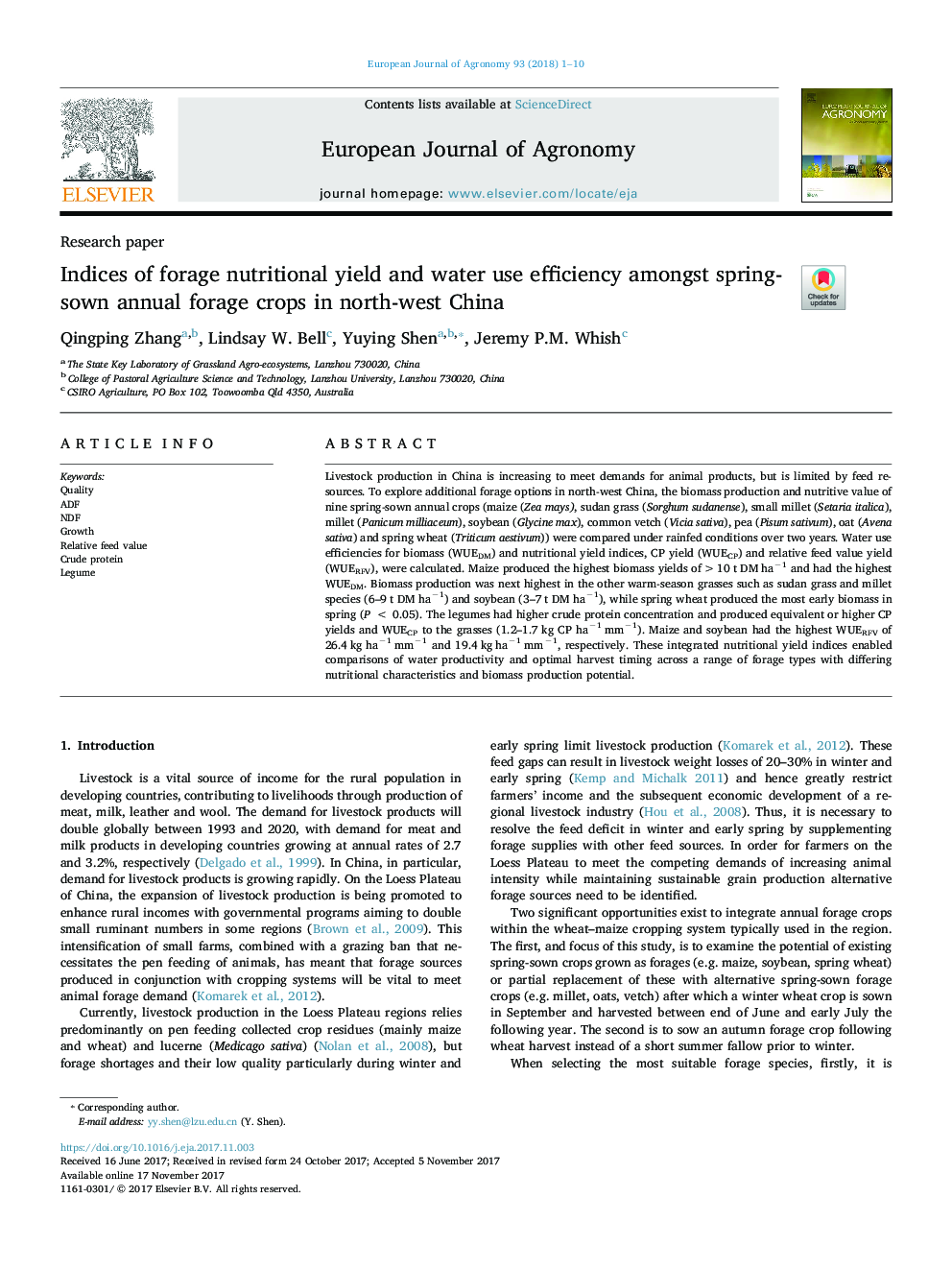| Article ID | Journal | Published Year | Pages | File Type |
|---|---|---|---|---|
| 8878980 | European Journal of Agronomy | 2018 | 10 Pages |
Abstract
Livestock production in China is increasing to meet demands for animal products, but is limited by feed resources. To explore additional forage options in north-west China, the biomass production and nutritive value of nine spring-sown annual crops (maize (Zea mays), sudan grass (Sorghum sudanense), small millet (Setaria italica), millet (Panicum milliaceum), soybean (Glycine max), common vetch (Vicia sativa), pea (Pisum sativum), oat (Avena sativa) and spring wheat (Triticum aestivum)) were compared under rainfed conditions over two years. Water use efficiencies for biomass (WUEDM) and nutritional yield indices, CP yield (WUECP) and relative feed value yield (WUERFV), were calculated. Maize produced the highest biomass yields of >10 t DM haâ1 and had the highest WUEDM. Biomass production was next highest in the other warm-season grasses such as sudan grass and millet species (6-9 t DM haâ1) and soybean (3-7 t DM haâ1), while spring wheat produced the most early biomass in spring (P < 0.05). The legumes had higher crude protein concentration and produced equivalent or higher CP yields and WUECP to the grasses (1.2-1.7 kg CP haâ1 mmâ1). Maize and soybean had the highest WUERFV of 26.4 kg haâ1 mmâ1 and 19.4 kg haâ1 mmâ1, respectively. These integrated nutritional yield indices enabled comparisons of water productivity and optimal harvest timing across a range of forage types with differing nutritional characteristics and biomass production potential.
Related Topics
Life Sciences
Agricultural and Biological Sciences
Agronomy and Crop Science
Authors
Qingping Zhang, Lindsay W. Bell, Yuying Shen, Jeremy P.M. Whish,
